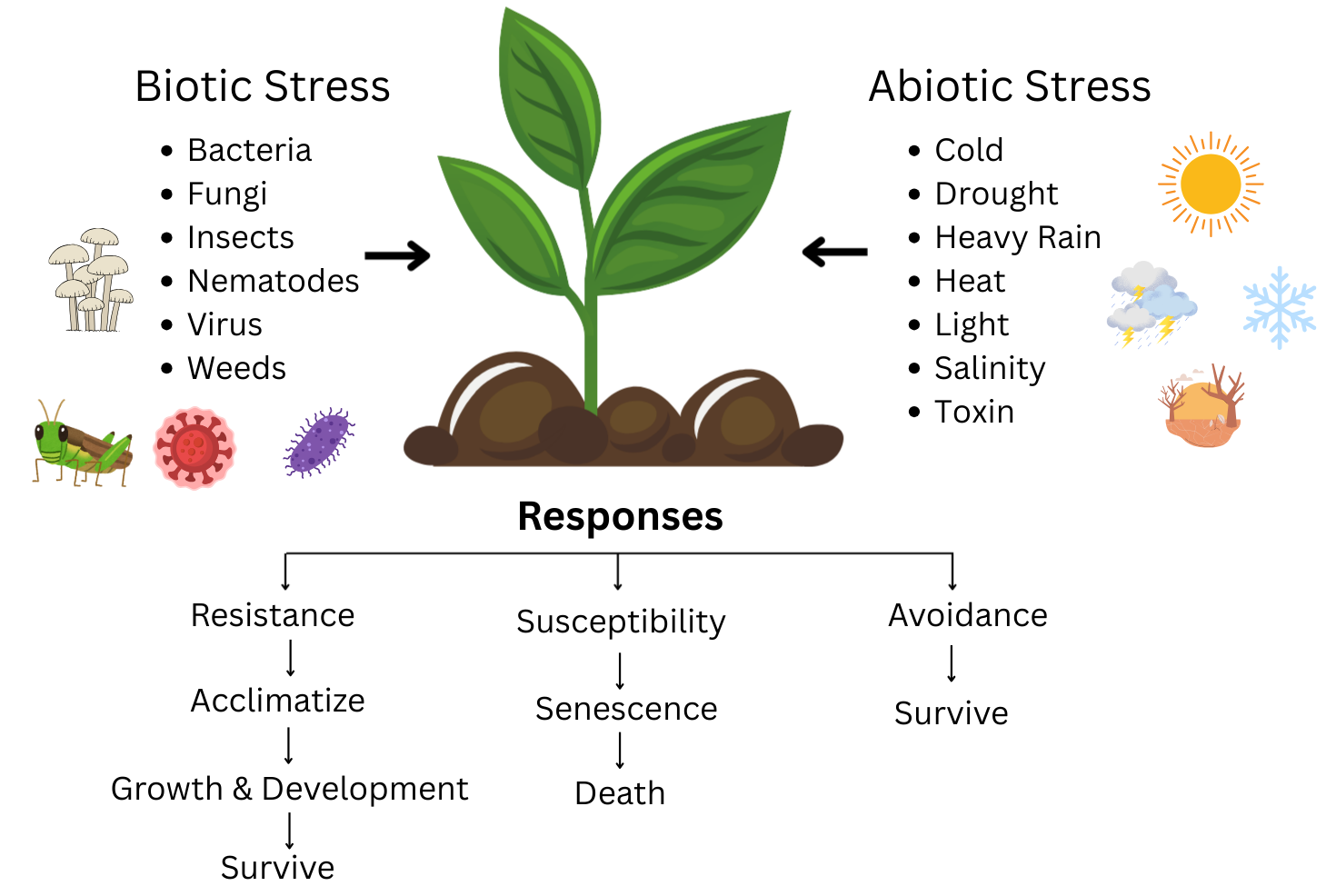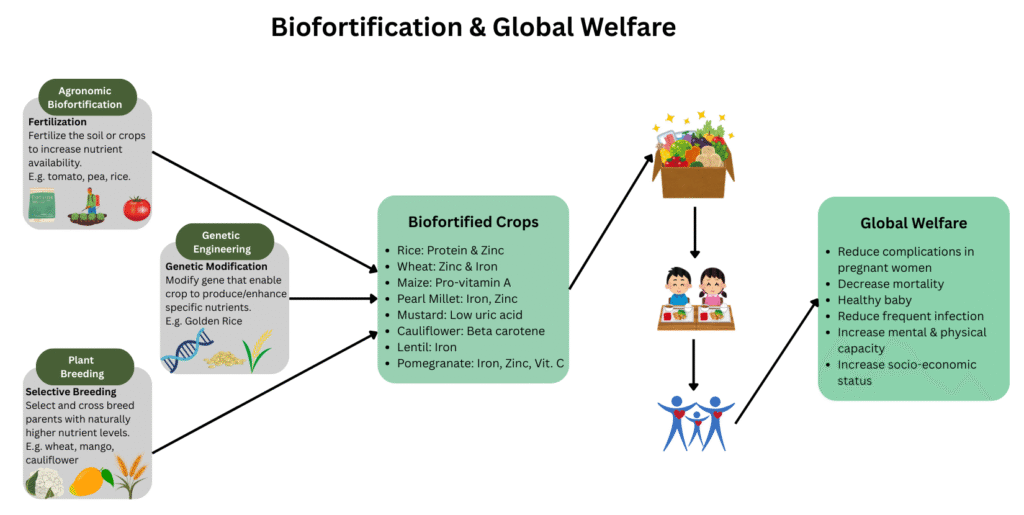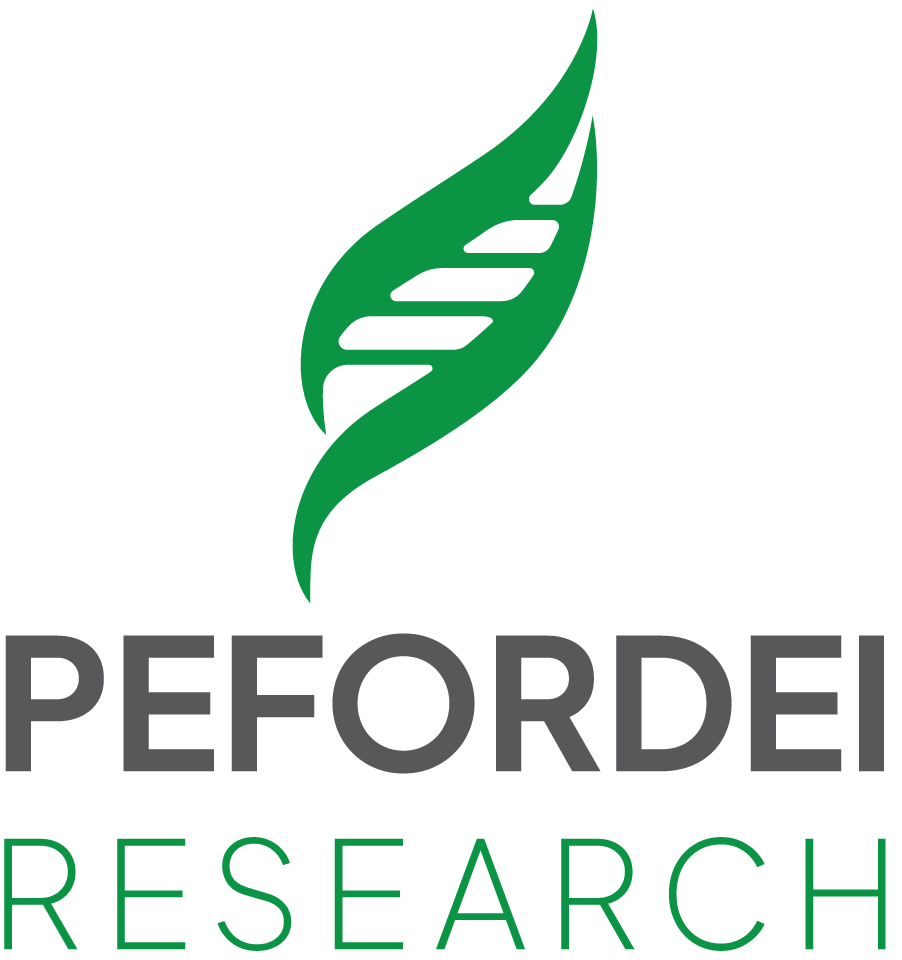Articles
The Hidden Power of Plants:
Why Plant Science Matters More Than Ever
Author: Fidelia Sihombing | Published: September 29, 2025

Plants are everywhere. More than 400,000 species have been identified, and scientists estimate there may be another 100,000 species yet to be discovered. Humanity cannot survive without them. And yet, because of our limited awareness, we often reduce their role to just two functions: food and oxygen. In reality, plants are indispensable to every aspect of our lives. They provide food, clothing, shelter, medicine, religious and cultural symbolism, and countless industrial products. Archaeological evidence shows that humans have been cultivating and processing plants for nearly two million years. Simply put, plants are the foundation of human civilization.
But what exactly do plants do for us? Let us explore three of their most vital contributions: medicine, resilience, and nutrition.
Plant as Medicine
When we hear the words herbal remedies or jamu, we are reminded of the deep tradition of using plants as healing agents. This knowledge is not unique to Indonesia. Across civilizations, people have long turned to plants for their medicinal properties.
In ancient Greece, Aristotle (384–322 BC) emphasized the medicinal use of plants in the early development of Greek medicine. Then followed by Theophrastus (371–287 BC), the “Father of Botany,” established one of the earliest schools dedicated to studying medicinal plants. Later, Pedanius Dioscorides (40–90 AD) compiled the De Materia Medica, an encyclopedia that cataloged 600 therapeutic plants, serving as the foundation of pharmacology for centuries.
Some of the world’s most important drugs trace back to plants: aspirin from willow bark, digoxin from foxglove, morphine from the opium poppy, quinine from cinchona bark, and pilocarpine from jaborandi. Even today, many lifesaving cancer drugs such as vincristine (from Madagascar periwinkle) and paclitaxel (from Pacific yew) are plant-derived.
The power of plants as medicine lies in their secondary metabolites, also known as phytochemicals. These compounds include alkaloids, glycosides, flavonoids, polyphenols, terpenes, and others. Far from being passive byproducts, phytochemicals have diverse pharmacological activities: antioxidant, antiviral, antibacterial, anti-inflammatory, analgesic, antimalarial, anticancer, and even neuroprotective effects.
For instance:
- Berberine, from Berberis species, disrupts bacterial membranes.
- Quercetin, found in onions and apples, reduces oxidative stress.
- Curcumin, from turmeric, is both anti-inflammatory and neuroprotective.
- Resveratrol, present in grapes and peanuts, is studied for anticancer potential.
- Vinblastine, from periwinkle, is used in chemotherapy.
These pharmacological effects make medicinal plants a treasure trove for drug discovery, particularly in the fight against tuberculosis, cancer, and neurodegenerative diseases. As global health challenges evolve, plants remain a vital source of new therapies.
|
Activity |
Class |
Compound |
Plant Source |
|
Antibacterial |
Alkaloid |
Berberine |
Berberis spp |
|
Sanguinarine |
Papaveraceae family |
||
|
Flavonoids |
Kaempferol and quercetin |
Onion and green tea |
|
|
Antifungal |
Polyphenols |
Epigallocatechin gallate |
Green tea |
|
Essential oils |
Oregano oil and tea tree oil |
Oregano and tea tree |
|
|
Antiviral |
Flavonoids |
Quercetin and hesperidin |
Various medicinal plants, including onions and apples |
|
Polyphenols |
Tannins |
Pomegranate and green tea |
|
|
Antioxidant |
Flavonoids |
Quercetin |
Various medicinal plants |
|
Polyphenols |
Resveratrol |
Grapes, berries, and peanuts |
|
|
Curcumin |
Turmeric |
||
|
Anti-inflammatory |
Polyphenols |
Gingerol |
Ginger |
|
Curcumin |
Turmeric |
||
|
Anti-cancer |
Polyphenols |
Resveratrol |
Grapes, berries, and peanuts |
|
Epigallocatechin gallate |
Green tea |
||
|
Alkaloids |
Vincristine and vinblastine |
Madagascar periwinkle |
|
|
Camptothecin |
Chinese happy tree |
||
|
Terpenoids |
Paclitaxel |
Pacific yew |
|
|
Betulinic acid |
Betula spp. |
||
|
Neuroprotective and neuropharmacologi- cal effects |
Polyphenols |
Curcumin |
Turmeric |
|
Resveratrol |
Grapes, berries, and peanuts |
||
| Bacosides | Waterhyssop |
Table 1. Pharmacological activities of plant secondary metabolites
Plant as Climate Survivors
Plants do not simply provide; they endure. Like humans, plants face stress from their environment. Abiotic stresses, such as drought, heat, salinity, and poor soil, combine with biotic stresses from fungi, bacteria, insects, and other organisms. Stress disrupts plant metabolism, energy production, and cellular stability. To survive, plants must rapidly adjust through acclimation (short-term changes in physiology and metabolism). Over more extended periods, they adapt structurally or genetically to persist in hostile conditions.
What makes today’s challenge more complex is climate change, which brings multiple stress factors together. For instance, heat and drought may strike simultaneously, creating a combined effect greater than either alone. Scientists classified interactions among stresses as synergistic, antagonistic, or additive. Regardless of the type, the impact is profound: crop yields decline, food production falters, and global food security is threatened.
Understanding how plants respond to multiple, overlapping stresses is therefore critical. Studying these responses in real-world field conditions—not just in laboratories—will be key to developing climate-resilient crops. These resilient varieties are not only essential for agriculture in regions already experiencing climate extremes but are also vital for ensuring a stable food supply for future generations.
Plants are survivors by design. We can adapt our agricultural systems to face the unpredictable realities of a changing climate by learning from their strategies.

Figure 1. Plant responses to abiotic and biotic stresses
Plants as Nutrition Enhancers
Beyond survival, plants nourish us in profound ways. They are the source of calories, protein, vitamins, minerals, and fiber that sustain human life. Yet despite their abundance, hunger remains a global crisis. Population growth combined with climate change has left many communities without reliable access to nutritious food.
Two forms of hunger stand out: malnutrition and hidden hunger. Malnutrition happens when the human body consumes nutrients in unbalanced proportions, causing poor health outcomes. Hidden hunger (or micronutrient deficiency) is defined as when people consume enough calories but not enough essential vitamins and minerals. This condition silently affects billions worldwide, particularly children, pregnant and nursing mothers, and the elderly.
Efforts to address hunger have been made, including dietary diversification, supplementation, and fortification. Biofortification stands out as an innovative solution among those solutions. Unlike traditional fortification, which adds nutrients during food processing, biofortification enhances the nutritional content of crops as they grow. This means the benefits are built into the food itself.
There are several approaches to biofortification:
- Agronomic biofortification: applying mineral fertilizers to soil or crops to increase nutrient availability. For example, zinc-enriched fertilizers can improve grain nutrition.
- Plant breeding: selecting and crossing crop varieties with naturally higher nutrient levels, thereby creating new varieties rich in iron, zinc, or provitamin A.
- Genetic engineering: inserting, deleting, or modifying genes that enable crops to produce or accumulate specific nutrients. Golden Rice, engineered to produce beta-carotene, is a well-known example.
Biofortification offers a sustainable way to combat hidden hunger while also improving crop yields and resilience. By delivering essential micronutrients directly through staple foods, it can transform the health of vulnerable populations.

Figure 2. Biofortification and global welfare
The Bigger Picture
From healing to resilience to nutrition, plants are not passive organisms. They are our active allies. Crucial for our survival. In every leaf, root, and seed lies a story of adaptation and potential.
This is why plant science matters more than ever. As the global population rises and climate pressures intensify, our reliance on plants only grows deeper. But without careful stewardship—without balancing use with conservation—we risk destabilizing ecosystems and undermining our future.
At PEFORDEI Research, we recognize these urgencies, and we are committed to advancing knowledge of plant science through three main pillars:
- Medicine – exploring plant-derived compounds for future therapies.
- Resilience – studying plant adaptation to climate stress for sustainable agriculture.
- Biofortification – developing strategies to improve nutrition and fight hidden hunger.
Through interactive classes, hands-on workshops, and collaborative research, we aim to connect science with society. Our mission is not only to study plants but also to share this knowledge, cultivate sustainable practices, and inspire action.

Figure 3. PEFORDEI Research Logo
Conclusion
Plants are not just part of our environment—they are the foundation of our survival. They heal, they endure, they nourish. Without them, humanity cannot exist.
This is why plant science is no longer optional; it is essential. And this is why PEFORDEI Research is dedicated to uncovering the hidden power of plants—so that together, we can build a healthier, more resilient, and sustainable future.
Reference
- Dar, Refaz Ahmad, Mohd Shahnawaz, Muzaffer Ahmad Ahanger, and Irfan Ul Majid. 2023. “Exploring the Diverse Bioactive Compounds from Medicinal Plants: A Review.” The Journal of Phytopharmacology 12 (3): 189–95. https://doi.org/10.31254/phyto.2023.12307.
- Jamshidi-Kia, Fatemeh, Zahra Lorigooini, and Hossein Amini-Khoei. 2018. “Medicinal Plants: Past History and Future Perspective.” Journal of Herbmed Pharmacology 7 (1): 1–7. https://doi.org/10.15171/jhp.2018.01.
- Kumar, Arvind, and Arvind Correspondence. 2016. “Medicinal Plants: Future Source of New Drugs.” Preprint, Unpublished. https://doi.org/10.13140/RG.2.1.1395.6085.
- Mutke, Jens & Barthlott, Wilhelm. (2005). Patterns of vascular plant diversity at continental to global scale. Biologiske Skrifter. 55. 521-537.
- Ofori, Kelvin F., Sophia Antoniello, Marcia M. English, and Alberta N. A. Aryee. 2022. “Improving Nutrition through Biofortification–A Systematic Review.” Frontiers in Nutrition 9 (December): 1043655. https://doi.org/10.3389/fnut.2022.1043655.
- Rivero, Rosa M., Ron Mittler, Eduardo Blumwald, and Sara I. Zandalinas. 2022. “Developing Climate‐resilient Crops: Improving Plant Tolerance to Stress Combination.” The Plant Journal 109 (2): 373–89. https://doi.org/10.1111/tpj.15483.
- Zandalinas, Sara I., and Ron Mittler. 2022. “Plant Responses to Multifactorial Stress Combination.” New Phytologist 234 (4): 1161–67. https://doi.org/10.1111/nph.18087.
Let’s Advance Plant Science Together
From research collaborations to training and consultation, we’re here to connect knowledge with impact. Join us in exploring the hidden power of plants for health and sustainability..
